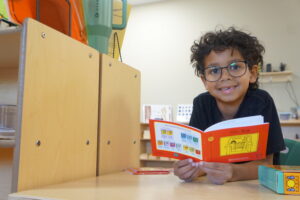 Here at Jarrell Montessori, we are asked in virtually every tour how we teach reading. It’s actually based on phonics, which makes it sound basic, yet the process is anything but. It’s a multi-layered approach conducted by trained, certified Montessori teachers.
Here at Jarrell Montessori, we are asked in virtually every tour how we teach reading. It’s actually based on phonics, which makes it sound basic, yet the process is anything but. It’s a multi-layered approach conducted by trained, certified Montessori teachers.
At Jarrell Montessori, we believe in making reading feel like magic—not a chore. Montessori literacy is about building a deep understanding of how sounds and symbols work together—wrapped in curiosity, play, and independence.
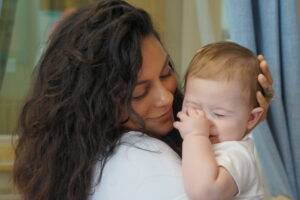 Step 1: Building the Foundation with the Spoken Word (ages 2 to 36 months)
Step 1: Building the Foundation with the Spoken Word (ages 2 to 36 months)
Long before your child touches a book, they’re mastering oral language, which is the foundation of literacy. Montessori classrooms are language-rich environments, filled with songs, storytelling, and conversations. Teachers intentionally use rich vocabulary and precise language (yes, we’ll call it a cylinder instead of a thingy), and kids are encouraged to express themselves clearly.
Why it matters: Children who are exposed to a rich spoken language environment develop a stronger vocabulary, better listening skills, and greater phonological awareness—all essential building blocks for reading.
Step 2: Sound Games (ages 2 to 36 months)
Maria Montessori was onto something way before brain scans and reading research backed her up—phonemic awareness is key. Our teachers play oral games where children listen for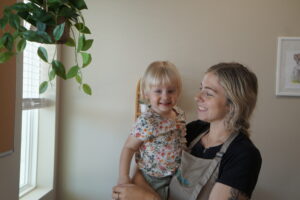 beginning, middle, and ending sounds in words.
beginning, middle, and ending sounds in words.
“What sound do you hear at the beginning of bat?”
“Buh!”
“Yes! Can you think of another word that starts with ‘buh’?”
Soon, your child can isolate and blend sounds in their head, setting the stage for reading without ever picking up a worksheet.
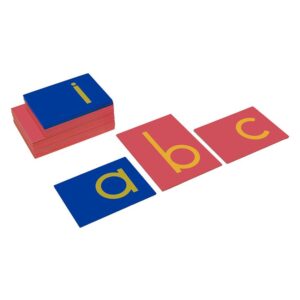 Step 3: The Sandpaper Letters (ages 3 – 5 years old)
Step 3: The Sandpaper Letters (ages 3 – 5 years old)
This is where Montessori gets a little “weird” in the best way. Children trace sandpaper letters with their fingers while saying the sound that letter makes.
This is called multi-sensory learning, and it’s exactly what research says helps kids internalize letter-sound relationships.
Say it. See it. Touch it. Boom—connection made.
We focus on the sounds, not the letter names. So instead of “This is the letter M,” your child learns “This is the mmmm sound.” We use lowercase letters, too—because that’s what they’ll see in books!
Step 4: The Moveable Alphabet—Spelling Before Reading?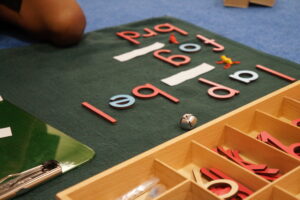
Here’s where it gets wild: in Montessori, children spell before they read.
After learning individual letter sounds, your child uses the Moveable Alphabet—a box of wooden or plastic letters—to build words they can sound out.
They might spell “cat” as “c-a-t” by hearing each sound and picking the letter that matches. This helps solidify sound-symbol correspondence and develops confidence.
This is called encoding, and it naturally leads into decoding (reading!).
Step 5: Blending and Reading Words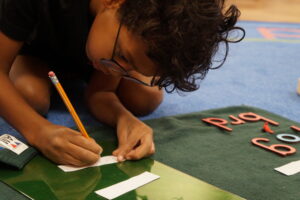
Once your child has spent time creating words with the Moveable Alphabet, they start recognizing those same sound patterns in print.
With gentle guidance, they begin to blend sounds into words:
“C-A-T… cccaaatt… cat!”
We use phonetic readers…simple books made up of short-vowel, consonant-vowel-consonant words like Bob Books https://bobbooks.com/…to help children practice. These books are carefully chosen so your child can experience success and build fluency without frustration.
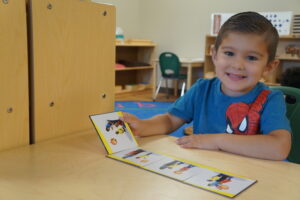 Step 6: Reading Just for Fun!
Step 6: Reading Just for Fun!
This is the endgame: kids reading because they want to.
Once they’ve built the skills to read independently, Montessori students have free access to books all day. We don’t assign reading levels or force them to take tests after every book. We don’t reward reading with stickers or pizza. We let the reading itself be the reward.
Whether it’s Blueberries for Sal, a nature guide, or a book about dinosaurs, our shelves are full of child-chosen, teacher-curated books designed to capture their interest and build a lifelong love of reading.
Why It Works…Here’s the secret sauce: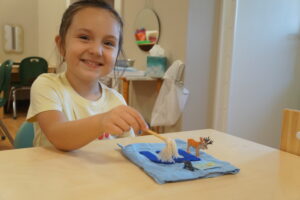
- Individualized instruction—Each child moves at their own pace
- Hands-on materials—Learning through touch, sight, and sound
- Real-world relevance—Every work, every material, is based on a real object or concept
- Joyful, pressure-free environment—No one’s getting gold stars for reading the most books
Plus, we’re trained to recognize when a child needs more support and when they’re ready to take off like a rocket ship toward chapter books.
Bottom line?
Reading doesn’t start with books. It starts with curiosity and then joy. =)
~ Shannon Black, Founder/Co-Owner of Jarrell Montessori
P.S. If you’re searching for a Montessori preschool in Jarrell, TX, we’d love to show you how our child-centered reading journey sets children up for success—not just in school, but in life. Schedule a tour and see the magic for yourself at Jarrell Montessori.

